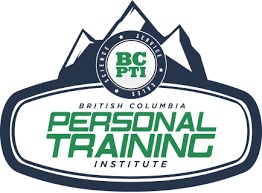The pursuit of optimization has instilled a curiosity for asking, “What is the best…”
The best answer for us is…it depends.
Context matters when giving the most informed answer. Follow up questions of what are you hoping to achieve by using the deadlift? What are you goals? What are you capable of executing?
Get specifics. The more specific we can get about the context, the more narrow and relevant the answer may be (unless they’re looking for general answers).
What’s the best deadlift for learning and patterning the movement?
What’s the best deadlift for hypertrophy & strength?
What’s the best deadlift for shorter vs. taller people?
Context matters. Let’s take a look at some of the nuances that come into play when choosing the most appropriate variation for the PERSON in front of us.
The Importance of the Hinge
To better understand deadlifts, it starts with the hinge. The hinge is considered a foundational movement because it allows for us to pick up items from the ground and is used functionally everyday. More importantly, strengthening the hinge pattern in the gym also facilitates better movement outside of the gym.
A hinge starts with maintaining middle foot balance as you push the hips backwards, loading the posterior chain (glutes, hamstrings and lower). It should feel natural, like bowing forward while keeping the spine neutral (relatively flat), knees slightly bent and weight still balanced in the mid-foot.
When it comes to building strength and resilience, few exercises hold as much power as the deadlift. At its core, the deadlift is a hinge movement, a foundational pattern that not only builds muscle but also reinforces the natural movement mechanics our bodies are designed for.
Decoding which one is “better” depends on your goals, body type, and the equipment you have on hand. While there are many different variations, today we will take a look at 4 of them. Each variation will look similar but have different starting points and execution cues. Pay close attention to the slight differences.
Conventional Deadlift: The Classic
The most recognized variation of the deadlift, the conventional deadlift. The conventional deadlift is the most common form of the deadlift,
The conventional deadlift is the most well-known variation, typically using a barbell but can utilize other tools such as kettlebells It emphasizes strength through the posterior chain and is excellent for improving overall power. The conventional deadlift also has a relatively wide application in sports performance, making it a staple for athletes looking to increase strength, explosive power, and stability. The conventional deadlift will emphasize the glutes, hamstrings and low back.

However, not everyone is built to perform conventional deadlifts with perfect mechanics. Some lifters, especially those with limited hip mobility or longer limbs, may find this variation uncomfortable or even risky. In these cases, the ability to regress the movement to the client’s current level will be the key to success.
Romanian Deadlift (RDL): Glute Builder
If the goal is to emphasize the hamstrings and glutes while minimizing lower back stress, the Romanian deadlift is an excellent choice. In this variation, the emphasis of the lift is on the eccentric portion, which is the lowering aspect of the lift. We can conceptually think about the lift starting at the top because our focus will be to slowly control the descent of the lift to allow the glutes and hamstrings to be loaded. The hips hinge back as the weight is lowered just below the knees (or slightly lower), with the torso maintaining a neutral spine.
The RDL works well for those looking to increase muscle hypertrophy, particularly in the posterior chain, while improving flexibility and control in the hamstrings. It’s also more forgiving for lifters who experience discomfort from conventional deadlifts due to its reduced range of motion. The RDL is also great at challenging the glutes and hamstrings in a lengthened position.

The RDL looks very similar to the conventional deadlift in the start position but has more of a hinge, that is, pushing the hips back and up while maintaining a more horizontal torso position. The bigger difference is the range of motion of the lift, where we typically stop just shy of the ground to maintain tension on the hamstrings and glutes.
Sumo Deadlift: The Cheater’s Lift (just kidding)
The Sumo deadlift variation has a greater hip mobility requirement relative to the hip abductors and adductors, the side glute and inner thigh muscles.
For lifters with limited hamstring flexibility or those wanting to distribute the load differently, the sumo deadlift can be a great variation. With a wider stance and toes pointed out, the sumo deadlift shifts more of the work to the hips, glutes, and quads, while taking some stress off the lower back. This variation also loads the adductors more and can be challenging for those lacking in hip mobility.


This variation is a favorite among powerlifters, as it shortens the range of motion, allowing for heavier lifts in many cases. The sumo deadlift’s wide stance is ideal for those with tight hamstrings or longer torsos, making it an excellent option for body types that struggle with conventional deadlifts.
In powerlifting, many people will see the sumo deadlift as cheating due to the adjusted range of motion but ultimately, in the sport of powerlifting, the goal is to lift the heaviest amount of weight using the allow variations. There are leverage and demand differences but both the conventional and sumo have their usage and place.
Trap Bar Deadlift: A Versatile Hybrid
If you’re looking for a deadlift variation that blends elements of a squat and a deadlift, the trap bar deadlift (sometimes called a hex bar deadlift) offers a unique solution. The trap bar’s neutral grip places less strain on the lower back, allowing the lifter to stay more upright throughout the movement. This variation can be gentler on the spine and is often recommended for beginners or those with lower back issues.



The trap bar deadlift is a fantastic tool for overall strength and athletic development, with a more balanced distribution between the posterior and anterior chains. Trap bar deadlifts are more upright compared to conventional and can be seen as a squat/deadlift hybrid.
Choosing the Right Deadlift for You
Ultimately, the “best” deadlift depends on your goals and context. Want to build raw power and strength? The conventional deadlift might be your go-to. Focused on hypertrophy and flexibility? The Romanian deadlift offers that targeted touch. Dealing with mobility issues or wanting to lift heavier? Sumo might be the solution. And if you’re looking for a hybrid that works both the posterior and anterior chains while sparing the lower back, the trap bar deadlift is a perfect choice.
The deadlift isn’t a one-size-fits-all exercise, and that’s where the beauty lies. The key is to understand the hinge and choose the variation that aligns with your goals, equipment, and body mechanics. Each has its benefits, and incorporating a mix of variations might just be the key to a more well-rounded approach to lifting.







Leave A Comment